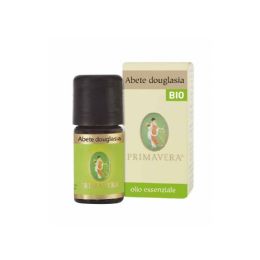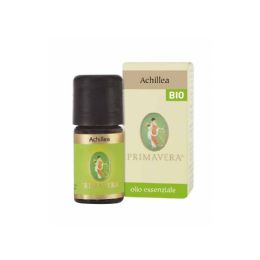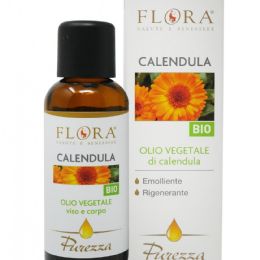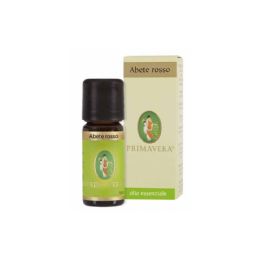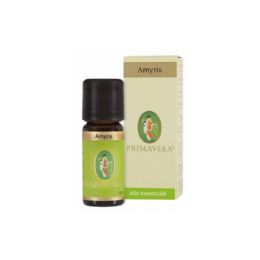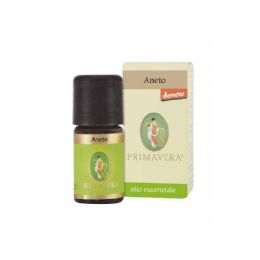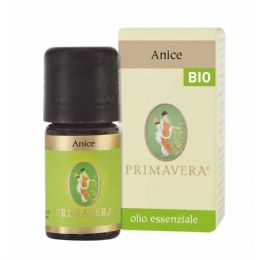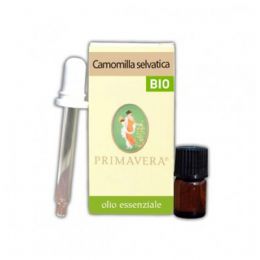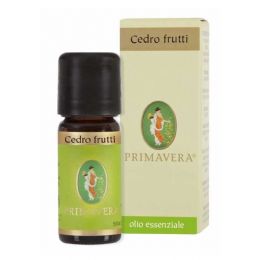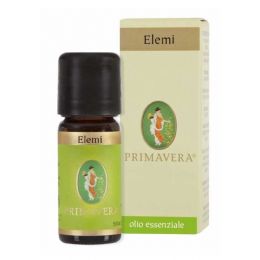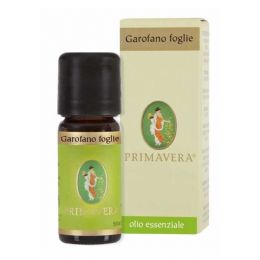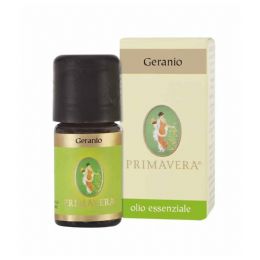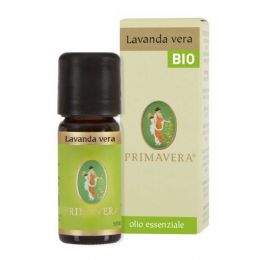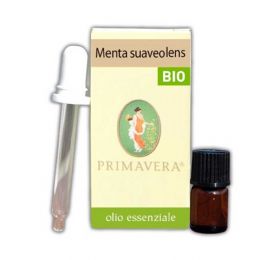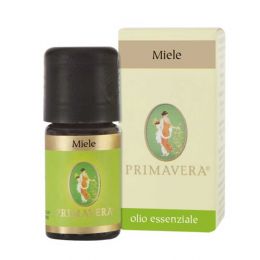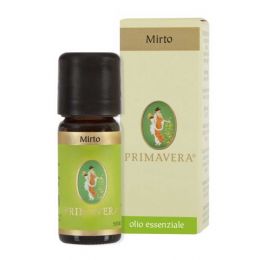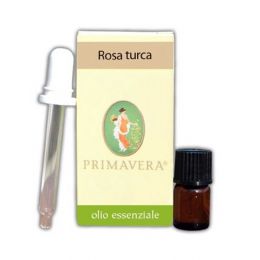Homeopathy memory of water aromatherapy
Homeopathy memory of water Aromatherapy
Homeopathy memory of water aromatherapy
The geometric archetype of evolution is the spiral.
All living creatures in their evolution follow this archetype.The man in his spiritual path follows the spiral, from energy and consciousness intrinsic to the structure of the universe.
The spiral is a curved line that revolves around a central point and thatgradually moves away from that point. Needless to say, is the symbol of life, Galaxy, space: the milky way has spiral arms and as you many other galaxies. The spiral is divided into many types, but we are interested in the most linked to mathematical proportions, the logarithmic spiral ,because it follows an exponential increase established by the physical laws of the universe. The logarithmic spiral is hidden in every corner of the Earth, seeds, flowers, fruits, even animals, human finger bones followthis scheme because it is the result of a particular mathematical sequence, known as the Fibonacci sequence, named after the Pisan mathematician who in 200 first described it (for the record, after a trip to Egypt).
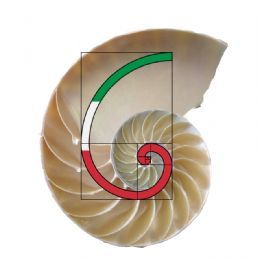
This number is important because it marks what the ancients knew asgolden ratio, a ratio of sides of a geometric figure in ancient cave paintings in churches and temples, as well as in relations between the sides of some important ancient monuments including the Parthenon in Athens, the great pyramid of Giza and Chartres Cathedral. In practice,according to the dictates of sacred geometry, architectural use of the spiral or the golden section would enable the building or the statue of being in harmony with natural laws, and then to draw cosmic energy for the benefit of the inhabitants. Finally, note how the downward spiral has much affinity with the pentacle, however with the triple wall, however with the maze, to underline the cosmic link
We also observed in many natural objects as these spirals forming helices and number of propellers is intimately linked to the Fibonacci sequence. If the agreement is respected lining stairs and wrap around a cone, you see that each scale belongs to two propellers rotate in opposite directions, the propeller "left" and the propeller "right." If you count the number of rows and the number of propellers propellers left, we note that the pair of numbers obtained is formed by two successive representatives of the Fibonacci sequence:
To explain why nature seems so close to mathematics, we must consider the question of the effectiveness of geometric arrangements, for example to promote the processes of plant growth and optimization of space filling. The question of whether the aesthetic sense and aesthetic geometric bees can have the same effect of the colors of the flowers, helping to 'pollination and then plant breeding? This aesthetic function of the Fibonacci sequence is not actually been clearly demonstrated ...
Likewise in finance in 'technical analysis of financial markets, using an instrument called a Fibonacci retracement. The Fibonacci retracements generally correspond to a media or indicating the natural resistance to price. And 'then it based on the idea that you can predict market movements based on relationships or thresholds that reference the Fibonacci sequence. The ratios are obtained by dividing a number in the Fibonacci sequence to the next number. There is, however, be noted that since all financial analysts and operators around the world are looking at these reports, it may be that are helping to generate a phenomenon that self-fulfilling.
Homoeopathic techniques, unique to arouse much controversy, is practiced all over the world is that by naturopathic doctors, but also by dentists and veterinarians, as well as by practitioners of Ayurvedic medicine.
It is based on three core principles
1. The law of similarity for which the like heals like, this principle is the fact that to date back to Hippocrates who wants a substance that causes a set of symptoms in a healthy person, can cure a sick person who has the same symptoms. It is this concept that gives its name to the discipline from the Greek words romeo and pathos
2. The law of individuation, in homeopathy cure the sick person and not the disease, reason why we are looking for the symptoms, the most idiosyncratic of a person Taking into account all aspects that characterize those physical to psychic those physiological and hereditary mentali.C'è need to know the symptoms of the individual prsonali
3. The law of the processes of high dilution, homeopathic theory has it that the dilution and the dynamics of a medication may enhance the healing effects. The medicaments are diluted several times in water or mixtures of water and alcohol until the point not to the tracking of the molecules of the substance originating .The process involves the dynamization with a series of shock.
None of these principles has obtained to date the imprimatur of the scientific community.
The law of similarity opposes classical medical approach under which to fight the disease using drugs whose purpose is to eliminate the symptoms or destroy the aggressors.
You take for example medicines that are lower fever when the patient's temperature is too high, an antibiotic that fights bacteria responsible for an infection, an antacid to fight gastric hyperacidity, a ipotensore to lower blood pressure.
As regards the procedure of high dilutions, it runs counter to the modern pharmacology that is based on the biological activity of specific molecules.
As far as the law of individualization in medicine it does not consider the body as a global body, but we tend to study each component separately, using a mechanistic approach while homeopathy uses a holistic approach.
As mentioned above it is not surprising that the debate remains on even if both strands of thought are compared for many years.
The homeopathic method is based on the principle that the body has in himself the strength to fight the disease. From this consideration the supporters of homeopathy are looking for ways to stimulate the natural process of healing rather than the identification of the pathogen or the name of the disease.
Homeopathy strives to discover in detail the patient's symptoms to start or support the process of healing correspondent.
The practitioner will then know when and how the symptoms manifest themselves what amplifies them or diminish them, the time at which the actions appear to soothe them or exacerbate them.
So two patients suffering from the same disease may be prescribed homeopathic remedies different way because their reaction is different or that their specific symptoms are not the same. The homeopathic now have a computerized database to select remedies according to the countless combinations of symptoms and the constitution of their patients
A homeopathic preparation that leads the definition 6X indicates a remedy in which the main extract was diluted in proportion 10 to 1 in a mixture of water and alcohol to 6 times. This process is called decimal dilution or low dilution.
At each step of the six the mixture will be "dynamized", stirred with 100 shocks, but you can find the dilutions "grads" incicate by the letter C and "thousandth" indicated by the letter M, also known as high dilutions.
In homeopathy it is estimated that the remedies prepared at high dilution is more effective than low dilution, the former are used almost exclusively by professionals directly homeopathic and is generally not available commercially.
Once diluted, the extract is presented in the form of tablets or granules that are left to dissolve under the tongue, or in solutions that are administered in drops.
However, there are also creams or oils for local customs that are inspired by the principle of similarity, they contain the tinctures of plants prepared according to the method of homeopathy.
The open debate on the question of the effectiveness of homeopathic treatment is open and lively.
The views on this diverge radically. For some it would be an outrageous nonsense, for others it would be a very promising approach that has proven itself every day for the experience of millions of people.
According to early homeopathy poserebbe of absurd concepts that have not evolved at least 150 years; the very high dilutions would ensure that not a trace remained of the active ingredients of active substances that could not.
Proponents of homeopathy respond that opponents leading an ideological battle, although they admit that the effects of the high dilution products do not come from the original substance would not be able to answer as to why the effects are still products.
a further assumption latest, at least surprising, that would explain the efficacy of homeopathy, as well as the difficulty to evaluate through scientific evidence is that of the patient-practitioner relationship-remedy. According to this theory would form a real bond between patient and operator medicine the term comes from quantum mechanics (entanglement) and describes the phenomenon whereby two particles, once intrigued, possess the bonds for which the state of one corresponds to the state the other regardless of the distance at which they are located.
We are witnessing a tremendous battle between scientists. In the two fields, doctors and researchers of high birth publish contrary articles
For example. in 2005 the Lancet, one of the most accredited medical journals in the world has published a study which showed that homeopathic remedies could have at most only a placebo effect. The study highlighted that the high level of satisfaction of patients undergoing homeopathic treatment was due to three main factors:
• The homeopathic treat primarily diseases that tend to resolve spontaneously
• Individuals treated deliberately and unconditionally believe in therapy
• Consultations in homeopathic cures are generally very long, empathetic and warm and it is shown that the more the therapist is warm better therapy works
Proponents of homeopathy have argued that these studies done by the journal were in bad faith and that started from preconception as homeopathy does not cure a symptom but rather the whole person and in more groped to isolate the relationship patient - physician just to test the drug would go against the much-vaunted scientific method. They point out that in many cases the effect of homeopathy placebo effect can not be considered, in fact, some studies show that random homeopathic remedies produce positive effects well determined.
Numerous researchers were able to observe that the high dilution homeopathic preparations have effects on plants, animals and cells so much as to say that even if a single remedy works is impossible to say that all homeopathic remedies have only the placebo effect.
An example for tuti is that of the contaminated wheat dall'arsenico that subjected to treatment with a homeopathic solution to arsenic is free from contamination.
On the other hand many laboratory experiments using calorimetry, thermoluminescence or optical emission have demonstrated that it is possible to differentiate the pure water from the ultra diluted solutions that according to classical chemistry could not be distinguished.
Finally, a study published in 2010 in the US has shown that homeopathic solutions destroy cancer cells like solutions used in chemotherapy.
Of the hypotheses of explanation consist in the fact that water is able to retain the imprint of a substance dissolved in advance even if the phenomena that underlie this ability are not yet clear.
Several researchers have presented the results of studies with which they have shown that the products suitably diluted and dinamicizzati can produce measurable biological effects, among which:
• The restructuring of the water molecules that retain the same chemical structure H2O, but arranged differently.
• The influence of silicon from glass containers, the silicon may contaminate the liquid with a positively effect of "doping" as occurs in semiconductors
• The formation of nano bubbles caused by striking dynamization
• The creation in the molecules of water of electric and electromagnetic phenomena having long lasting
• The uneven dispersion or agglomeration of products diluted
The author of the M.D. Anderson Cancer Center comes to state:
"There are many rationales that may show why the water has different properties depending on its past history. In fact they are so obvious that one wonders why a controversy still exists about the existence of water memory.
Brief history of homeopathy
In 1790, Samuel Hahnemann translated the Materia Medica of a Scottish doctor.
He found himself in disagreement with the latter had attributed directly to the bitterness and astringency from cinchona bark (from which was then produced quinine) its effectiveness in treating malaria. He noted, correctly, as other plants just as bitter and astringent had no effect against the disease. Out of curiosity, he took a little 'bark for a few days and discovered that the substance had caused symptoms similar to those of malaria, including intermittent fever and diarrhea.
This reminded him of the law of similarity, of which he had read the Cursus Hippocraticus. Six years later (1796) published in a scientific journal, a paper on "a new approach to identify the healing properties of drugs."
Starting from his first experience with the cinchona bark, has experimented on himself and his co-workers and relatives, various substances of which he had been able to establish the pathogenesis, that is to say all the symptoms caused by the administration of an investigational product in a healthy subject. Samuel Hahnemann also developed the technique of dilutions to evade the problem of the toxicity of certain products. These were the beginnings of homeopathy.
In 1799, the ideas of Hahnemann gained credibility when he managed through a homeopathic remedy to prevent and treat scarlet fever that had reached epidemic proportions in Germany.
In 1810 Samuel Hahnemann published the 'Organon doctor, was the real founder of the manuals of homeopathy. This therapeutic technique experienced a significant growth in Europe and was introduced in America in 1825 by Hans Burch Gram, a native of Boston doctor who had studied homeopathy in Europe.
The first American medical school of homeopathy, Hahnemann Medical College and Hospital, was founded in 1835. In 1849, while cholera raged in the city of Cincinnati, 2 homeopaths published statistics indicate that only 3% of 1,116 patients who had been treated with homeopathic remedies had died from the disease while, at that time, it is estimated that 50% of patients with this disease treated with traditional medicine, had died,
From the late nineteenth and early twentieth century, the practice of homeopathy experienced a boom in Europe and North America. However, in the twentieth century, the development of allopathic extremely efficient, such as antibiotics, has greatly reduced the practice of homeopathy. Only at the end of the last century we have seen a renewed interest in the technique.
Homeopathy has now been integrated into the public health systems of several countries, including Germany, France, England, India, Pakistan, Sri Lanka and Mexico. In France, homeopathy is recognized by the College of Physicians and is taught at the university
We share an article published on the web www.radiojuvenil.icrt.cu Cuba, entitled "Vidatox, Cuban product in the service of public health."
For years the ABC homeopathy have followed the studies and results of this homeopathic remedy whose origin is the venom of a scorpion endemic to Cuba, the blue scorpion or rhopalurus junceus, the remedy was sold by the laboratory Labiofam, after over 15 years of study.
We could read on the web, articles of homeopath Guerrero Andres Serrano, in many other websites and blogs about Homeopathy and also in Cuban media.
- Dr. Arixel Peña Peña, floral therapist - http://www.radiojuvenil.icrt.cu/ wrote:
"Vidatox is a homeopathic cuban product with anticancer , anti-inflammatory and analgesic. value, It 'indicated as an adjunct to cancer therapy, after evaluation in over 15 different tumor cell lines.
It is a new homeopathic product obtained from scorpion venom, with proven analgesic, anti-tumor effects (slows and inhibits the growth of cancerous tumors), anti-inflammatory and anti-metastatic (interrupts the blood supply to the tumor and thus preventing the spread and reproduction of cancer cells beyond the organ of origin).
This drug was developed by LABIOFAM Business Group. 15 years of laboratory studies, clinical and preclinical studies confirm its efficacy in cancer therapy complementary. 10,000 cancer patients were treated with this therapy with positive results in improving the quality of life outcomes and stop tumor growth. Each milliliter (20 drops) contains 33% of water-alcohol solution of poison rhopalurus junceus 30 CH.
Vidatox has improved the quality of life of patients, to regain the weight and appetite, reduce the consumption of traditional painkillers relieve pain and prolong survival. The proteins that inhibit the malignant cells, which are harmless to human health, without any side effect.
Bibliographic sources:
A. Arguelles -Fernández homeopathy in Cuba. Homeopathy Rev Mex 1995; 64 (574): 15-7.
Cuban Digital -Enciclopedia Ecured
-Registry Cases treated in CMF Bonaventure University Teaching Hospital, Havana, Cuba. "
Professor Emoto became known through his books, his experiences and photos and videos related to the "memory of water".
He was able to photograph the crystals formed from frozen water. Dimosstrò so that the quality and origin of "messages" received from the water caused crystals completely different.
He showed that tap water almost never form crystals, while natural water (source) will form nearly always.
But the most surprising result of the experiments showed when Emoto wrote on bottles of water posts positive or negative messages (also expressed in various languages).
It was possible to see the influence of these messages on the appearance and quality of the crystals; the words "love" and "gratitude", giving the most beautiful crystals, depending on the language used. Emoto has studied the effect of prayers, music, microwave etc. Published in his books or on the network obtained the photos.
Starting from the assumption that the adult human body is 70% water, which is also a very important part of the food assimilate continuously.
You understand that if you can influence the quality of water through the messages, intentions, music designs this influence goes to change our food, our bodies, and the effect of some of our thoughts and our actions and the our environment.
It is important to emphasize that, in the experience explained later, it was demonstrated that a negative influence is less harmful of indifference.
A demonstration of the theories of Emoto proposes the following experiment that anyone can do without special care:
Take two well washed jars with lids . The next time you cook rice (white or wholemeal) take 2-3 tablespoons and fill for about a quarter or a third of the jars. close it tightly.
On the first jar draw a message of positive intent (I love you, thank you, or drawing of a heart, the formula is free). On the second , drawing in a message of negative intent (I hate you, you're crazy, ....).
We place the pots in a room , near similar lighting .
Every day, we dedicate a moment to confirm that the intention was dedicated to each single jar.
After a few days or weeks, you will notice that the rice receiving good intentions are perfectly stored at room temperature, without sterilization. The rice jar witness is blackened and decomposed very quickly.
Initially the rice jar, receiving negative intentions (or nothing), is used primarily as a witness to allow you to understand the power of the experiment by comparison. If the experiment is successful the first time, and you decide to repeat it, the jar witness is no longer essential. Or, in any case, it is best not to mark it with the 'negative intent, you'll see for yourself why.
This experience is particularly impressive for rational minds: those who must see to believe. It requires, however, to consider the possibility to believe, and to achieve it with positive intentions. If you do not believe that this is feasible, and you want to prove that it is not, it is likely that this is the result you get.
The intentions that are sent to the rice must actually be true, pure, otherwise you do not get the result proposed. Daily exercise helps to achieve this.
If the experiment is successful, it is interesting to play it. First to show that is not the result of a case. But also to understand intuitively the process, as with the experience, the result will improve. If the rice positively influenced takes better for a few days or weeks in a first experiment, it can maintain its original look for several months in a second experiment, even in summer, when the temperature is about 25 ° C in closed environments, day night .
We know that the cooked rice stored in the refrigerator in a sealed container begins to show signs of mold after a few days.
The achievement of the result of keeping intact the rice for over two weeks, and then for several months or even years, at room temperature, challenge common sense.
The intentions that give the best results seem to be love and gratitude. You have to feel able to express "love" for a plate of rice. But we understand that this experience is part of a broader change in our design life, and life in general.
Once the experience is positive, it becomes much easier to be grateful for the rice dish. This experience leads to everyone something that goes beyond the application of a recipe or a small scientific experiment-culinary.
This experience is especially remarkable for the effect it has on those who undertake it. This is not simply observe concrete facts. Its influence is also revealed on our conception of reality. Our consciousness is so converted. The daily practice shows us more and better where to find the right intention, how to reach the heart.
This experience shows that we too, through experience, we are all connected, everything is connected. Rice, ourself, others, plants and animals, objects, and all existence of which we know almost nothing.
Our thoughts, our attitudes, our behavior, our words are concerned. When we asked to see the effect of our thoughts, intentions and messages on rice, we realize that what we do to ourselves, to others and to our environment, has consequences, and vice versa. If we want to live responsibly and make a path of evolution, it is necessary to live more conscious and coherent at all levels: physical, mental, emotional, affective, relational, social, citizen.
This experience is a guide to finding the right enthusiasm, the good intention, to reconnect to the heart. This will do for all of our projects.
Starting from a very concrete experience quickly takes a more psychological, philosophical or spiritual.
Another witness to the positivity of homeopathic treatments comes from the story of Dr. Amy Lansky:
Dr. Amy Lansky was a computer in Silicon Valley, when his life was transformed by the homeopathic treatment of his miraculous child with autism. In April 2003 he published his book "Care impossible: the promise of 'homeopathy', which has become one of the best selling books of homeopathy worldwide.
This is the story of how her son was diagnosed suffering from autism and subsequently treated with homeopathy, and is taken from an article written by Amy Lansky on the homeopathic treatment of 'autism, which appeared in June 2012 Homeopathic Health Magazine published Guadalajara, Mexico.
"In January 1995, an article in the journal Mothering about the homeopathic treatment for autistic children behavior sparked my interest to start looking for this treatment for my son Max.
At that time, my husband Steve and I were struggling to understand and accept the inability to Max to communicate and socialize with others.
Unfortunately this experience has increased in all age groups. In 1995, the dramatic increase in autism rates in the United States was just beginning, and the world of autism resources and treatments to fight was just beginning.
In the spring of 1994, when Max was only three years old, his tutor preschool invited us to an interview in which he recommended medical care. Max was becoming an extremely detached from context and had good relationship with the outside, did not respond well to his name and posters activities of self-stimulation.
During the daily observation seemed unconscious; if it was not tenutoseduto leg of his teachers, he ran or played somewhere else in the room. While other children played in the yard, the teachers found him engrossed in watching a toy or an animal in the classroom.
Although Max was usually in a good mood, it was only 10 or 20 words in her vocabulary and could not do two-word phrases. It did not seem to understand or respond when he was called. If I tried to read something before bed was moving all over the bed. Max was also extremely adept with blocks and computers, knew the numbers and letters, and loved to watch television and listen to dance music.
Following the advice of a therapist friend in communication we decided not to bring Max to the clinic at Stanford University where he was hospitalized earlier. He said that only we would push to cultivate an air of desperation.
He recommended a great speech therapist, who lived in Palo Alto, a woman who remains the best therapist in the work with children like Max. As with so many other events that have happened to us this year, someone was there to watch over our interests; normally it is extremely difficult to get an appointment with the therapist, but he received immediately Max. Rather than considering the bureaucracy began working with him immediately.
During the summer of 1994, I also learned the Feingold diet. One of the prohibitions in the list of problematic foods was cow's milk and Max was addicted to it. The bottle was his "love" and, sometimes drank up to 8 bottles per day. Once we removed the milk from the diet, it was like opening a tent, Max began to change, he continued with his way of doing autistic, but he certainly was more present than before. Years later I discovered that sensitivity to milk and other foods are a notable feature of the autistic children. Other changes we made in our diet at that time was to eliminate dyes and corn.
The progress of Max in therapy was slow and had begun to show the characteristic symptoms of autism echolalia (mental disorder resulting from the repetition of words spoken by others).
We have been destroyed, but determined to keep trying everything we could. In fact, it had become my worst nightmare made real.
My brother is schizophrenic illness so he knew how Max could affect our whole family.
We decided to enter the Max Montessori school, which was more suited to him in an attempt to take ideas from the book Sonrise Barry Neil Kaufman, for example, spend some time alone with him. Max's mood remained generally positive although in reality it was not present in its entirety. "
This was the state of affairs, when I read in the article published in Mothering homeopathy. In a sense, the small article of Judyth Reichenberg-Ullman has created a change in me; I knew instinctively that this form of treatment could be the answer I needed.
As I told someone up there watching over us!
The next day I called an acupuncturist friend and asked: Where can I find a homeopath? He showed John Melnychuk, a practitioner who had just founded in Palo Alto.
He gave us an appointment quickly and with it began the journey.
Our first encounter with John was a typical homeopathic treatment. John looked at Max and felt all the symptoms I've described to you about it: sleep, eating habits, patterns of sweat, physical symptoms, behavioral and personality. It also took into account its gestation, birth, and our family history. The first visit lasted about 2 hours.
After taking a couple of days to discuss the case, John called to tell us the name of the remedy he thought fit best for Max. (Carcinosin one LM)
Luckily, we hope smiled again. Within days of starting treatment with the drug in a daily dose liquid, Max began to show small changes. His verbal ability has become a bit 'more fluid, with new sentences and was aware of their social environment better.
The following week, Max's therapist noted that something in him had definitely changed. She did not know who had started a homeopathic treatment and asked quickly, what did you do? Max was already able to follow a sequence of two commands instead of one.
After a few months of Max changes were larger and more obvious. Each month has increased the potency of the drug and we saw a clear answer. When you start a new bottle of medicine with more power follows in a period of three days, an increase of hyperactivity followed with a modest improvement in cognition and behavior.
We decided to conduct a simple experiment. Steve gave Max his medication for a period of two days and changed its power for a while 'I did. I made observations trying to capture spontaneous improvement in his behavior. And I noticed exactly three days after the dose had been changed.
After 6 months of treatment, John suggested that we take care of Max from a cranial osteopath. John currently provides treatment for autistic children and believed that the cranial sacral therapy can accelerate the improvement in many of their cases.
Max had several treatments with the osteopath and we knew we had a big impact on him. They seemed calm and increased their desire for physical contact and affection.
After nine months of homeopathic treatment, the therapist Max thought his works were not the most necessary. A year and a half after the start of treatment Max was getting results above his age group. our therapist said the representative of the government, which was not his treatment he had helped Max, was homeopathy.
In fact, the therapist told us that he had never seen anything like it. He said he saw autistic children to recover, but never a child overcome autism like Max did.
At that time it was probably Max healed all '80%. Max continued Carcinosin periodically, for another 6 months.
The remaining 20% of his recovery lasted a period of several years, marked by transitions with new remedies with which Max was improving.
After 9 or 10 years, no one could have imagined his former autism.
Important, there are many homeopathic remedies that are used in the treatment of autism, because every child is different.
From my experience of observing several cases, I learned that ii remedies omeopaticisvolgono an important role in the treatment of autism. So in these cases you need to consult a homeopath.
The answer to the homeopathic treatment of Max was terrific.
But the case of Max is not unique. More and more families begin to treat their autistic children with the 'homeopathy, I have heard of other experiences that talk about real healing in the world. With an "incurable" disease, such as autism, even modest improvements can make a big difference in the quality of life.
Many homeopaths claim that there is always at least a small improvement in the majority of cases of autism.
Today Max is 21, studied film and animation at a major US university. And 'popular, extremely sociable and has a very good state of health. It has no dietary restriction and probably the family member with the most reduced need help homeopathic.
The homeopathic personality during observation in homeopathy is one of the keys to prescribe the appropriate remedy.
There are patients who do not need to speak to be identified but their appearance their gestures the way of dressing or simply their appearance in general says almost everything.
Watching them from the moment they enter the waiting room until they exit the consultation is vital for the homeopath.
There are many signals that suggest that a person holds a certain constitutive feature and a remedy or another who must be subjected characteristics which must be taken into account when finally prescribe the proper treatment.
Here we show some of the best-known characters:
a Type A person, hoping to not be watched for the moment when is through the door and try to go unnoticed when consulting, his voice will sound trembling and his eyes will be lowered the person Type A avoid eye contact and show you uncomfortable lowering the attention .If you pay attention to physical signsyou can see the typical warts on the palms or characteristics lower lips pending; the type A person typically presents an appearance of premature aging.
The type B person is sitting near the door or just in front if it is waiting certainly has already begun a conversation with another patient, you and stands out for its manic dresses provocatively always with his chest only discovered the ' idea of bringing a high collar shirt tight and closed disturbs sighs of all the difficulties in the consultation is noted for his great eloquence and that it may ask you to open the windows because they always have the feeling of drowning
a person Type C, will be sitting at the side of the door, however, go unnoticed, makes small talk very low does not have the strength to speak up. The behavior is evident in women with blue eyes her clothes go with his personality and the colors are soft pastel tones in the consultation will tend to cry constantly
Type D a person can be recognized by his clothes in black or dark colors soles give a sagging appearance and behavior from old
a person Type E has a pale appearance, changes place a thousand times is agitated and walking from one side of the room to the other , puts a lot of attention to his image. He likes to dress in light observing obsessed with cleanliness will not hesitate to clean the place during a consultation
a person Type F it will highlight in the waiting room then definitely take some provocative attitude there is no doubt that you put in the spotlight and with his presence stands out from all the others, he has a personality affabulante walks with elegance and is cloaked in an aura of superiority
the patient type G draws attention due to the burly physique ,is fat and thick , the head and the upper body is huge, slow both physically and mentally
The person Type H will come quickly despair if they wait just two minutes, frequently looking for some place to smoke a cigarette before entering the consultation normally well dressed as well as his profession demands it is usually nervous and even more so when you open the door of the consultation quickly enters and sits in a chair not to lose time
The person type " I " can be recognized by its hasty, in short sleeves throughout the year is very easy to meet, from little importance to its external image by presenting the card with an aspect neglected and unhygienic with baggy pants and short sleeves, wrinkles on the dress, is a extrovert and playful.
There are different opinions on the effectiveness of homeopathy. The British House of Commons Science Technology Committee and said there is no evidence that homeopathy is effective as a treatment for any health condition.
There is no evidence to confirm the idea that substances that can induce some symptoms may also help treat them. There is no evidence for the idea that the diluting and shaking substances in water can transform these substances in medicine.
The ideas that are the basis of homeopathy are not accepted by mainstream science, and are inconsistent with the principles long accepted on how to assess the effectiveness of scientific or medicinal products. The conviction of the scientific community on 'homeopathy has ruled that the principle of "like cures like" is "theoretically weak", and that this is the "consolidated view of medical science."
It is noted, for example, that many homeopathic remedies are diluted so that it is unlikely that a single molecule of the original substance remains in the final remedy. In cases like these, homeopathic remedies are made up of nothing but water.
Some homeopaths believe that, because of the process of shaking, the original substance leaves a "footprint" of the same in water. But there is no known mechanism by which this can occur. The 2010 report, said: "We believe the idea that ultra-dilutions can maintain an imprint of substances previously dissolved in them to be scientifically plausible."
Some people who use homeopathy can see an improvement in their health condition due to a phenomenon known as the placebo effect.
If you choose to use health treatments that provide only a placebo effect, you can lose the opportunity to use other scientifically based treatments that have been shown to be more effective.
Homeopaths believe that water habba memory. This is how they explain the medicinal properties of their concoctions. Apparently their patients are treated even if the pill or potion can not contain a single molecule of a medicinal agent.
But it really has water storage?
It depends on what you mean by memory. If for water memory means the property of having a stable state for some time, namely 50 femtoseconds is its retention time. It is about 60 million million times shorter than the memory of three seconds.
But with this "memory", the water could not hold back any useful information. The memory is just its ability to form an ordered group of water molecules that can last for 50 femtoseconds. It 'a bit like a crowd of people at the station, there are files in which people are standing around watching the departures or get a coffee, but these groups are dispersed after a while'. And so it is with water, there are pockets of order in which the water molecules interact with each other and with the things that are dissolved in it, but these transient effects are lost quite quickly, so as not to allow any useful advantage in time


